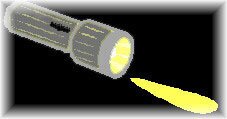 Dark Corners Menu |
 Pitzer Main Page |
July 5, 2007 |
by Allan Eaglesham
|
What words best describe Vincent Bugliosi's coverage of the death of LCDR William B. Pitzer on pages 560-563 of the endnotes for Reclaiming History?
|
 |
|
Instead of discussing the salient features of the case, Bugliosi attacks the veracity of the "messenger," Dennis David, who stated in a Waukegan, Illinois, News-Sun article in 1975 that he believed that Pitzer had been murdered in October 1966, possibly because of what he (WBP) knew of President Kennedy's wounds. The lawyer impugns Dennis David's honesty on the grounds that authors Harrison Livingston and Robert Groden stated that David claimed to have been present at the autopsy on President Kennedy's body (whereas his name is absent from the HSCA list of those present). Here are the quotes from Livingstone and Groden [1].
"Dennis David, a medical corpsman present at the autopsy, was..." Livingstone and Groden provided no source for this claim. We have to take them at their word, and Bugliosi is happy to do so because it suits his purpose. In stark contrast, on June 6, 2007, Dennis David informed me: "Bugliosi indicates that I told Livingstone that I was in the morgue during the autopsy. What checking did the lawyer do on the claim by Livingstone and Groden that David said he had been in the autopsy room? Did he phone Livingstone? Did he consult with Groden? Naah -- he asked photographer John Stringer. This may seem fair inasmuch as Mr. Stringer certainly attended the JFK autopsy, but Bugliosi admits that Stringer told him that he didn't know David. No matter; the lawyer is happy to conclude that Dennis David lied about being present at the Kennedy autopsy on Stringer's assurance that David's duties as chief-of-the-day would have confined him to the Medical School office. When Dennis David gave telephone testimony to the Assassination Records Review Board, he revealed information that, according to Bugliosi, "he apparently never told [author David] Lifton or Livingstone," i.e. that he saw in William Pitzer's possession photographic materials including a movie film generated during the autopsy on President Kennedy's body. The lawyer concludes that "it's clear that David is incapable of telling the same story twice in this matter." The fact is, however, the 1975 News-Sun article is cited in books by both David Lifton and Harrison Livingston and it quotes David as saying that Pitzer "filmed the autopsy of President Kennedy" and that he "saw slides of Kennedy's wounds." Furthermore, Livingstone's High Treason 2 [2] quotes David as follows: "I do know that [Bill Pitzer] had a film in his possession at one time" Dennis David's recollections have been consistent since 1975. His telephone number is in the white pages. I just checked -- it took seconds to find it on the internet. Why didn't Bugliosi call him? An investigator worth his salt would have. To impugn a man's character on the basis of shoddy work and unsourced statements is disgraceful. It speaks to the accuser's own integrity.
Bugliosi uses Kent Heiner's book [6] as his main source of information on the death of William Pitzer. That is his prerogative, but it is noteworthy that much more information on the specifics of the case is available on the internet [4], free of charge. It is noteworthy also that the URL for the Pitzer website is provided in Heiner's book. It is noteworthy again that the information on the internet makes the case that William Pitzer had in his possession a movie showing President Kennedy's body on an autopsy table that was generated via closed-circuit television [7]. The lawyer doesn't touch the issue of closed-circuit television -- a special part of Pitzer's duties -- and is too close-minded to deal with the fact that an open-minded "conspiracy theorist," on appraisal of new information, decided against the pro-conspiracy theory and concluded that William Pitzer committed suicide [4]. Vincent Bugliosi isn't interested in the important implications of the Pitzer matter. He decided from the outset that it was a convenient vehicle for kicking "conspiracy theorists." Don't bother him with the facts; he has already made up his mind. Notes |

William Pitzer and Dennis David ca. 1965.
